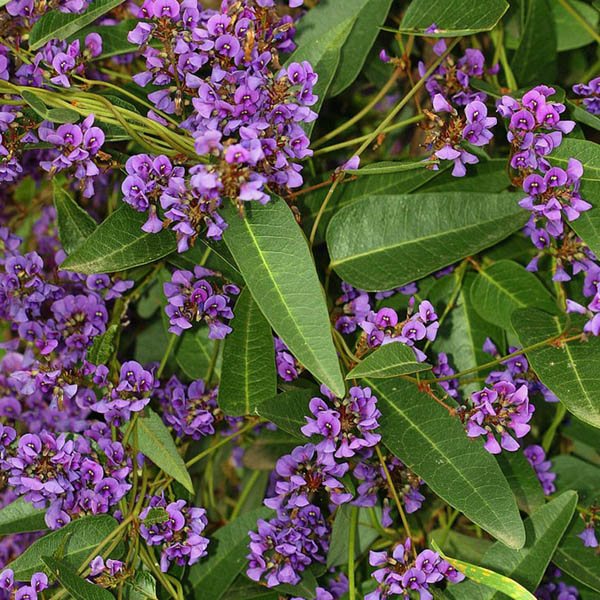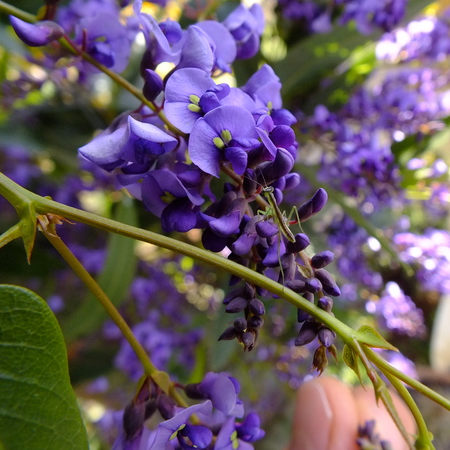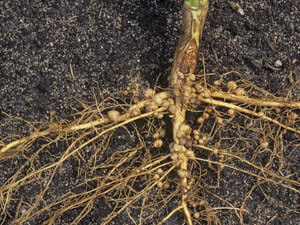Hardenbergia comptoniana is commonly referred to as Compton coral pea, native lilac vine, wild sarsaparilla and wild wisteria.
Growth Habit
H. comptoniana is a twining vine that grows to six feet high but may also reach as tall as twenty feet when allowed to grow without pruning. Being an evergreen plant, H. comptoniana lends interest to the garden throughout the year. Plant has dark green leaves and pea-like purple blooms. Bloom time is from late spring through late summer. Training the vine on a trellis will create a nice screen for a deck or patio. If preferred, it will also make a thick, tangled groundcover in areas where other plants do not do well.
Needs of Hardenbergia comptoniana
H. comptoniana like warm temperatures and sunshine but if grown in extremely hot areas, the vine should have a little shade.
Water regularly while plant is young and then enjoy, even in drought prone areas. Once it is established, it can take quite a bit of dry weather if grown in light shade. Feed a well balanced fertilizer; I prefer compost tea, once every two to three months.
Pruning can be done after blooms fade. For a thicker vine, prune the vine only where it twines around itself. Closely watching growth will allow you to pull these limbs out and thread them into the trellis rather than having to trim them back.
It is important to note that this vine will scramble across the ground and wrap itself around other plants. Keep a watchful eye out for this tendency.
Propagation
Propagation of Hardenbergia is easily accomplished by softwood and semi-hardwood cuttings in early spring. Cuttings should be rooted in a mix of 25% peat moss and 75% sand, kept moist and given plenty of light. Note that this mix can contain as little as 65% and as much as 80% sand with no notable difference in the process of rooting cuttings.


